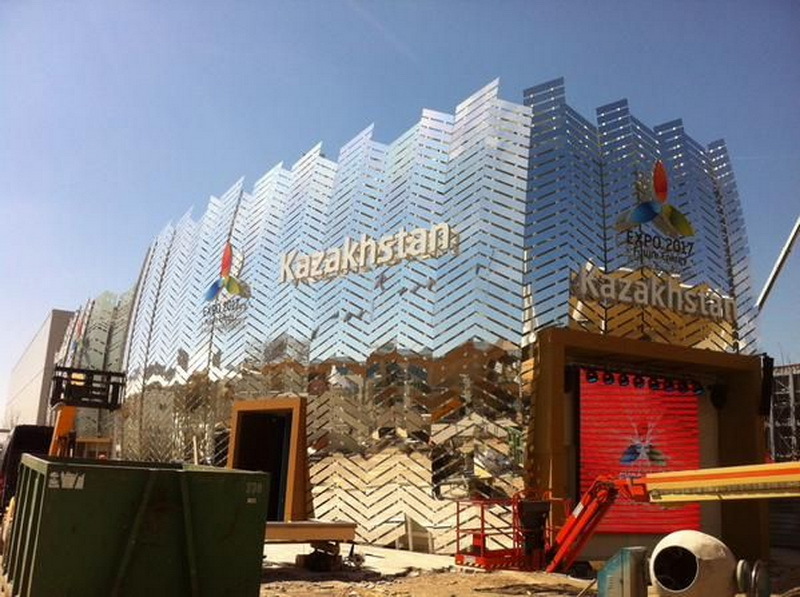Milan will be a global showcase for the next six months following the May 1 opening of EXPO Milano 2015. The universal exposition, running through Oct. 31, will allow more than 140 participating countries to show the best of their technology that offers a concrete answer to a vital need: being able to guarantee healthy, safe and sufficient food for everyone while respecting the planet and its equilibrium. In addition to the exhibitor nations, EXPO Milano also involves international organisations and expects to welcome more than 20 million visitors to its 1.1 million square metres of exhibition area.
 EXPO Milano examines human history through the lens of two aspects of food production: traditional cultural values and the use of new technologies. These two features do not stand apart, but are very much interconnected. Besides being an opportunity for industry players to meet, the event is part of a cultural journey that aims to highlight the changes currently faced by the entire world population.
EXPO Milano examines human history through the lens of two aspects of food production: traditional cultural values and the use of new technologies. These two features do not stand apart, but are very much interconnected. Besides being an opportunity for industry players to meet, the event is part of a cultural journey that aims to highlight the changes currently faced by the entire world population.
The Italian government allocated more than 13 billion euros from its budget for expo preparation. The gates were opened two hours before the official start of the fair to let in hundreds of people who began queuing outside the site early in the morning.
The Kazakh pavilion, which occupies 2,000 square metres, demonstrates the country’s agricultural diversity by greeting guests with kumys (fermented mare’s milk). The most popular part of the display is a pool with sturgeon specially bred in Kazakhstan. Endangered species of fish, the problem of the Aral Sea and solutions to these issues are also presented. Using a brief tour, pavilion organisers managed to show the weak points of the country’s agricultural sector as well as highlight its wealth.
One more important task of the pavilion is to present Kazakhstan as the host of EXPO 2017. Considering the difficulties that Milan faced while preparing EXPO 2015, Kazakhstan will take this experience into account in arranging for its exhibit in Astana and hold it at the highest level, said First Deputy Minister of Foreign Affairs and the national EXPO commissioner Rapil Zhoshybayev.
“The construction of the pavilion took almost one and a half years, but we are glad, I think, that the Kazakh pavilion is one of the best in this exhibition. We used the latest technologies, which helped us to tell the whole history of Kazakhstan through its agricultural characteristics,” said pavilion executive director Robert Mueller.
“Kazakhstan’s pavilion at the exhibition EXPO 2015 did not disappoint. From the outside it looks very futuristic. Inside, it is also advanced. Those sand shows about the history of Kazakhstan, the best samples presented of wheat and apples, interactive story of the Aral Sea and 4D show about contemporary Kazakhstan. New technologies are applied everywhere,” former Vice-Minister of Agriculture Marat Tolibayev who was presented at the launch of the exhibition commented on his Facebook page.
“Young boys and girls – volunteers who welcomed visitors in several languages deserve special attention. Their faces were shining. In general, I want to thank everyone who represents Kazakhstan at the EXPO 2015 exhibition in Milan,” he added.
The decision about EXPO 2017 was made Nov. 22, 2012, when the 156 member nations of the International Exhibitions Bureau (BIE) met in Paris and decided by an overwhelming majority vote of 103 countries that the event would be held in Astana.
EXPO 2017’s Future Energy theme will promote efforts to find sustainable energy solutions to meet growing global demand. Kazakhstan’s choice of the topic reflects the recognition by the country’s leaders and policymakers that even its vast reserves of natural energy resources are ultimately finite and that eventually the country, and the rest of the world, will have to make the transition to alternative energy sources and greener economies.
EXPO 2017 will last three months, include representatives from approximately 100 countries and is expected to draw three to five million visits, which would make it the largest international gathering of its kind Central Asia has seen.
“Traditionally, EXPO exhibitions have been held in Northeast Asia, Europe and North America,” said BIE Secretary General Vicente Gonzalez Loscertales, as reported by Edgekz.com. “Holding an exhibition in the new (Central Asian) region, which is the bridge between East and West, in a young country which has developed very good relations with European and Middle Eastern countries and former Soviet republics, as well as with all countries of the Central Asian region, is an additional advantage which also strengthens the position of Astana,” he added.


